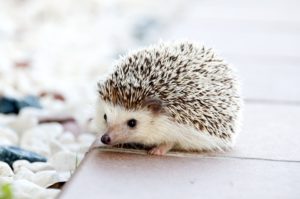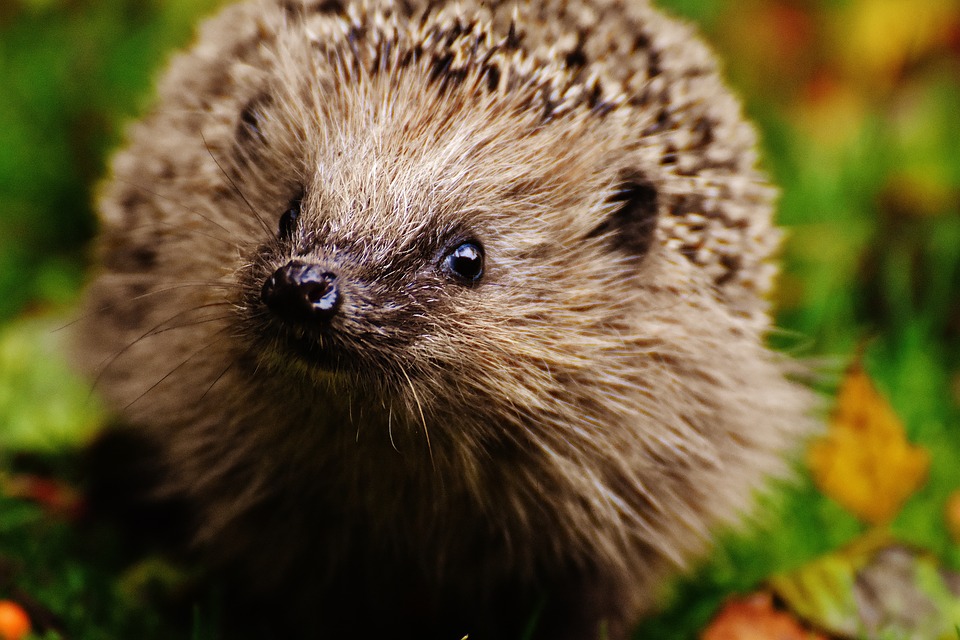Hedgehogs are small nocturnal mammals with a spiny coat and short legs. They’re able to roll themselves into a ball when faced with dangerous predators. There are 17 species of hedgehogs in 5 genera. They’re found across Europe, Asia, Africa and New Zealand. Take a look below for 29 more interesting and bizarre facts about hedgehogs.
1. On average, hedgehogs live between 3 and 8 years in the wild. In captivity, they can live up to 10 years due to better living conditions and no predators.
2. Depending on the species, hedgehogs weigh between 155 and 1,584 grams, or 5 and 56 ounces.
3. Depending on the species, hedgehogs can grow to be 10 to 30 centimeters, or 4 to 12 inches, long.
4. They can be white, light brown or black, with several shades found in bands along their quills. Their face, belly and neck is also covered in coarse hair. Some species of hedgehogs have black or dark brown masks across their eyes.
5. They have small, powerful legs with big feet and five toes. However, some species of hedgehog have four toes.
6. The hair on their back has a thick layer of spikes, or modified hairs, that’re known as quills. Their quills are made of keratin, which is the same material that human hair and fingernails are made of.

7. When they feel threatened, hedgehogs raise their quills upright in a crisscross pattern which makes its body sharp and difficult to attack.
8. They have between 5,000 and 7,000 spines. Each spine lasts about a year before it drops out and is replaced.
9. Some hedgehog species dig burrows that are up to 50 centimeters, or 20 inches, deep. Others prefer to make nsets with dead leaves, grasses and branches.
10. Desert hedgehogs prefer to hide in between boulders or burrow into the sand to hide from the intense heat.
11. In Asia, long-eared hedgehogs move into burrows that are often left by turtles, foxes, gerbils and otters.
12. Hedgehogs that live in colder climates hibernate through the winter. The ones that live in deserts, sleep through the heat and drought in a similar process called aestivation. In temperate locations, they will be active throughout the year.
13. Hedgehogs are nocturnal, which means that they’re active at night and sleep all day. In fact, they’re able to sleep up to 15 hours per day.
14. When looking for food, they rely heavily on their sense of hearing and smell, since their eyesight is weak and adapted for darkness.
15. They’re classified as insectivorous, which means that their diet consists mostly of insects. However, they have been known to also eat mollusks, small animals and vegetations.
16. Gardeners are big fans of hedgehogs because their diets include many garden pests.

17. Adult hedgehogs squeal and grunt when they’re excited or afraid. They’ll also grunt when they’re foraging.
18. They’re solitary animals but will couple only during mating season.
19. Female hedgehogs remain pregnant for 35 days.
20. Young hedgehog offsprings are called “hoglets” or “piglets.” Female hedgehogs will usually give birth to about 4 to 7 piglets once, sometimes twice, per year.
21. Newborn hedgehogs have quills at birth, but they’re soft and flexible. During birth, the quills are covered by puffy, fluid filled skin to avoid hurting the mother. By the end of the first day, the piglets skin will shrink and uncover 150 white quills.
22. It takes, on average, 6 to 13 weeks for piglets to be weaned. After that, they’ll leave the female hedgehog and being foraging on their own.
23. Forest hedgehogs are primarily prey to birds, such as owls, and ferrets. The smaller species, like the long-eared hedgehog, are prey to wolves, foxes and mongooses.
24. Hedgehogs aren’t rodents, they belong to the Erinaceomorpha order. This means that they’re not related to porcupines either, but they are related to shrews.
25. They’re known to travel up to 3 kilometers, or 1.86 miles, per day and move at speeds of up to 2 meters, or 6.5 feet, per second.

26. Desert hedgehogs like to eat scorpions. It does this by first biting the stinger off its tail, then swallowing the scorpion whole.
27. Like mice, moles, and opossums, hedgehogs have a natural immunity against snake venom through the erinacin protein that’s found in its muscular system. However, they can only shrug off a small amount of venom. A viper bite can still be fatal.
28. Hedgehogs are a food source in various cultures. For example, they were regularly eaten in Ancient Egypt as well as the Late Middle Ages in Europe.
29. They’re traded throughout Eurasia and Africa for traditional medicine and witchcraft.





One Comment
Pingback:
February 1, 2018 at 3:03 pm